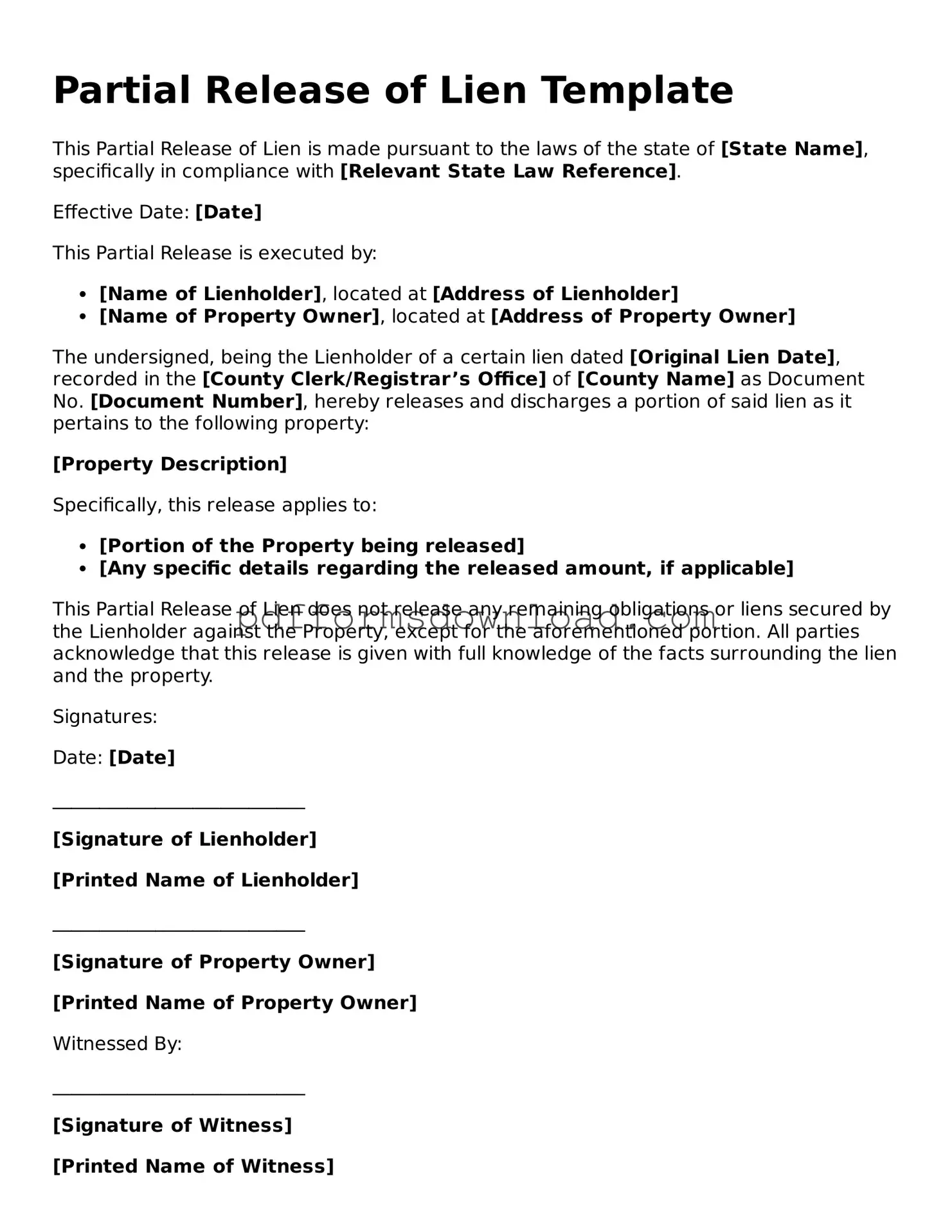Official Partial Release of Lien Document
The Partial Release of Lien form is a legal document that allows a property owner to release a portion of a lien on their property, typically after a payment has been made. This form serves to clarify the extent of the lien and can help facilitate smoother transactions in real estate dealings. To ensure your rights are protected, consider filling out the form by clicking the button below.
Make This Document Now
